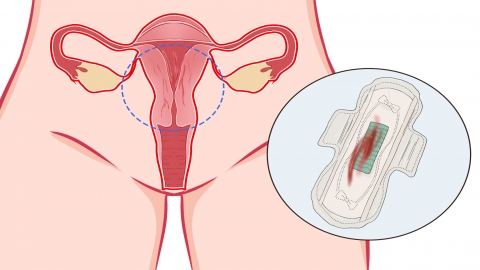What color is the bleeding during ovulation?
Generally, the color of ovulation bleeding can appear as light red, pink, brown, coffee-colored, or dark red. Different colors are related to the timing, amount, and duration of the bleeding within the body. The specific analysis is as follows:
1. Light Red
Light red bleeding is often caused by a temporary drop in estrogen levels during ovulation, leading to slight shedding of the endometrium. The bleeding is minimal and fresh, and the blood is expelled from the body without staying for a long time, thus appearing light red. This condition usually lasts for 1-2 days and is a relatively common manifestation of ovulation bleeding, often without other significant discomfort.
2. Pink
Pink bleeding is also associated with minimal fresh bleeding, possibly due to the mixing of blood with vaginal discharge, which dilutes the blood concentration, making the color lighter and pinkish. It often occurs at the early stage of ovulation when only a very small amount of endometrial tissue is shed. The color appears even lighter when mixed with discharge and generally requires no special treatment.

3. Brown
Brown bleeding occurs when a small amount of blood remains in the uterine cavity or vagina for a slightly longer time, causing oxidation of hemoglobin in the blood. The color gradually changes from fresh red to brown. It often appears in the later stages of bleeding or when the amount of bleeding is extremely small, indicating that the bleeding is about to end, which is a normal physiological phenomenon.
4. Coffee-colored
Coffee-colored bleeding is similar to brown bleeding, both being colors resulting from oxidized blood, with only slight differences in the degree of oxidation or duration of retention, making the color deeper and closer to coffee-colored. If the bleeding lasts for a short duration and is not accompanied by discomfort such as abdominal pain or backache, it is usually normal ovulation bleeding and no excessive concern is necessary.
5. Dark Red
Dark red bleeding is often due to a slightly larger amount of bleeding or blood remaining in the body for a moderate duration. It is not completely oxidized but has deviated from fresh red, appearing as dark red. It may be accompanied by mild abdominal pressure, often caused by pelvic irritation from follicle rupture during ovulation. If the symptoms are mild and quickly relieved, it is usually considered normal.
In addition, if the bleeding during ovulation continues to be bright red with increased volume, or is accompanied by significant abdominal pain, fever, or other symptoms, timely medical consultation is required to rule out conditions such as endometritis or cervicitis. At the same time, it is important to maintain good vulvar hygiene, avoid strenuous exercise, and reduce discomfort during ovulation in daily life.




